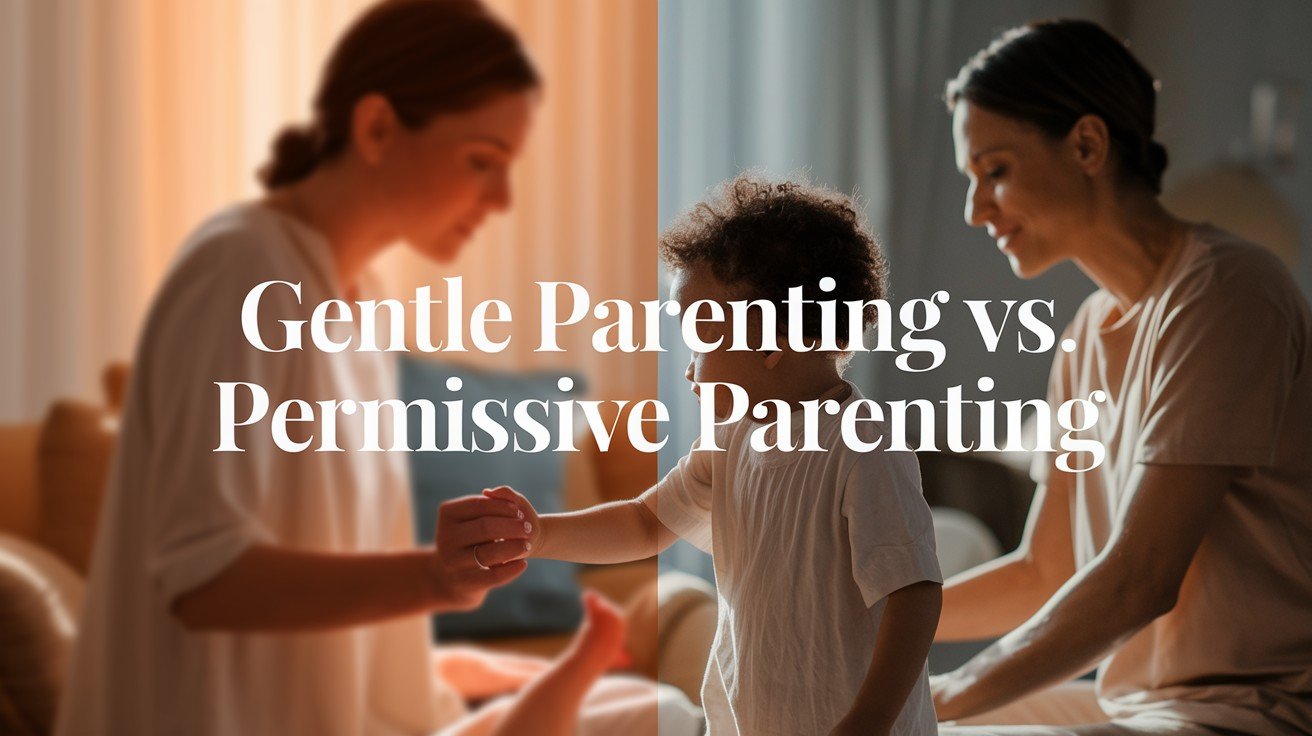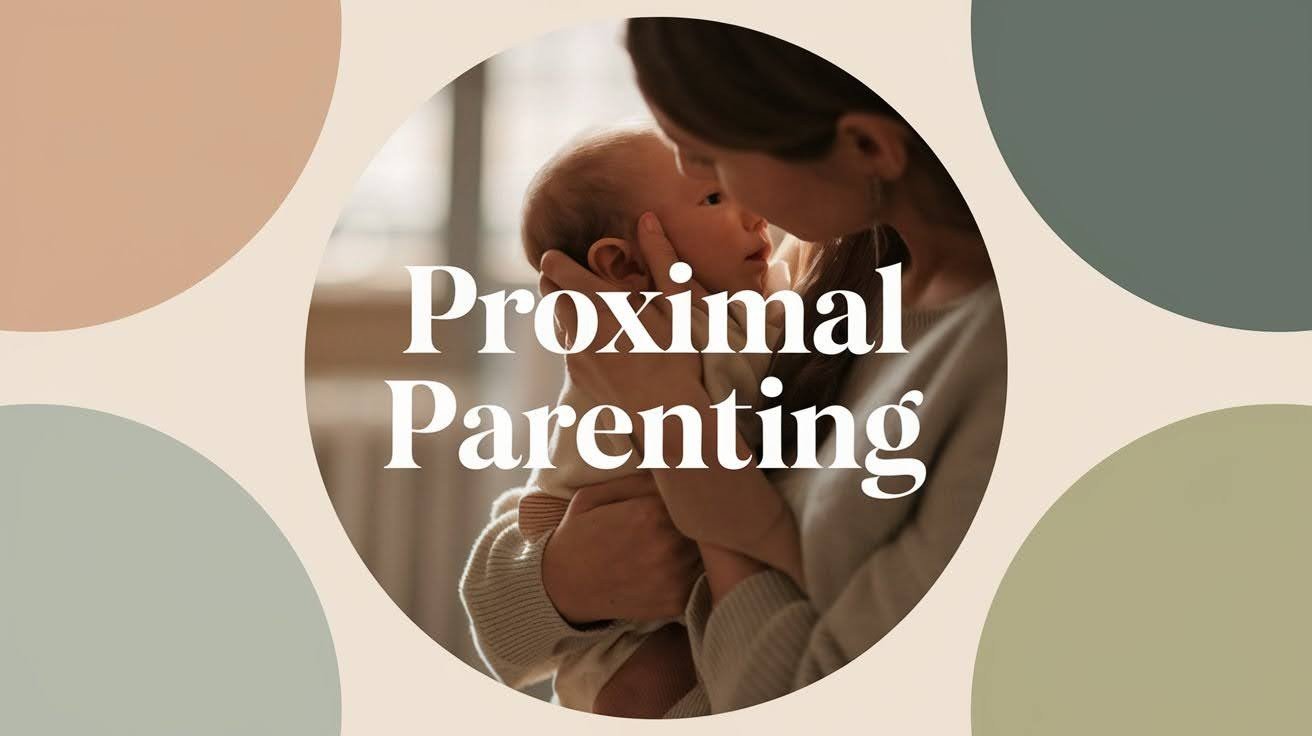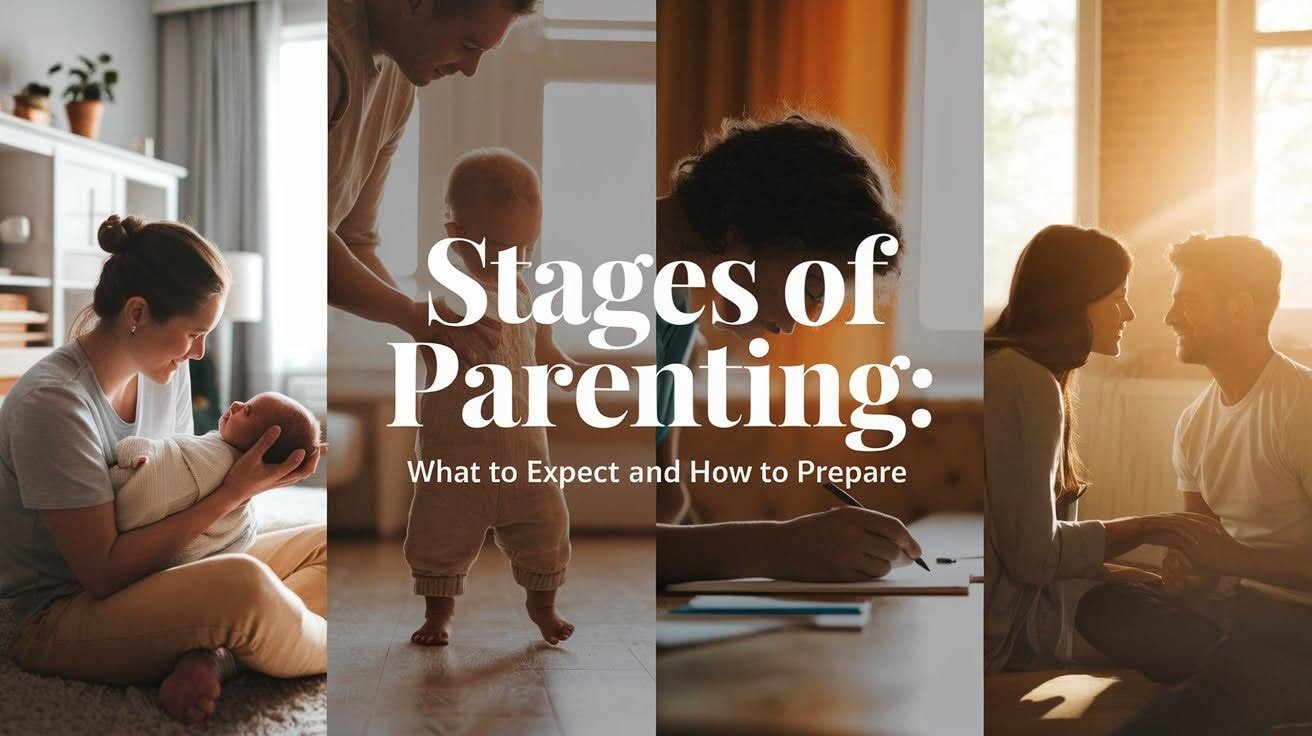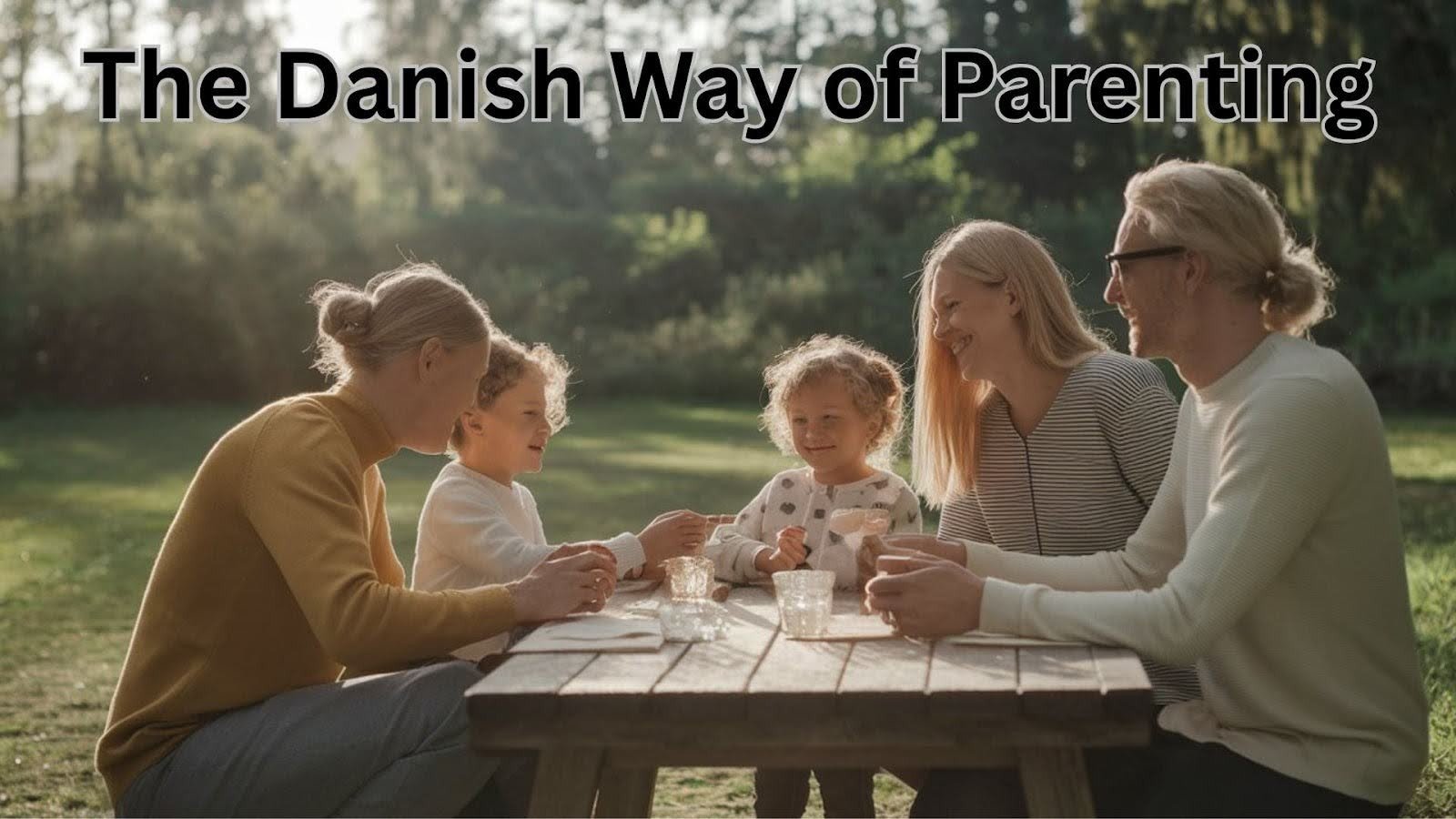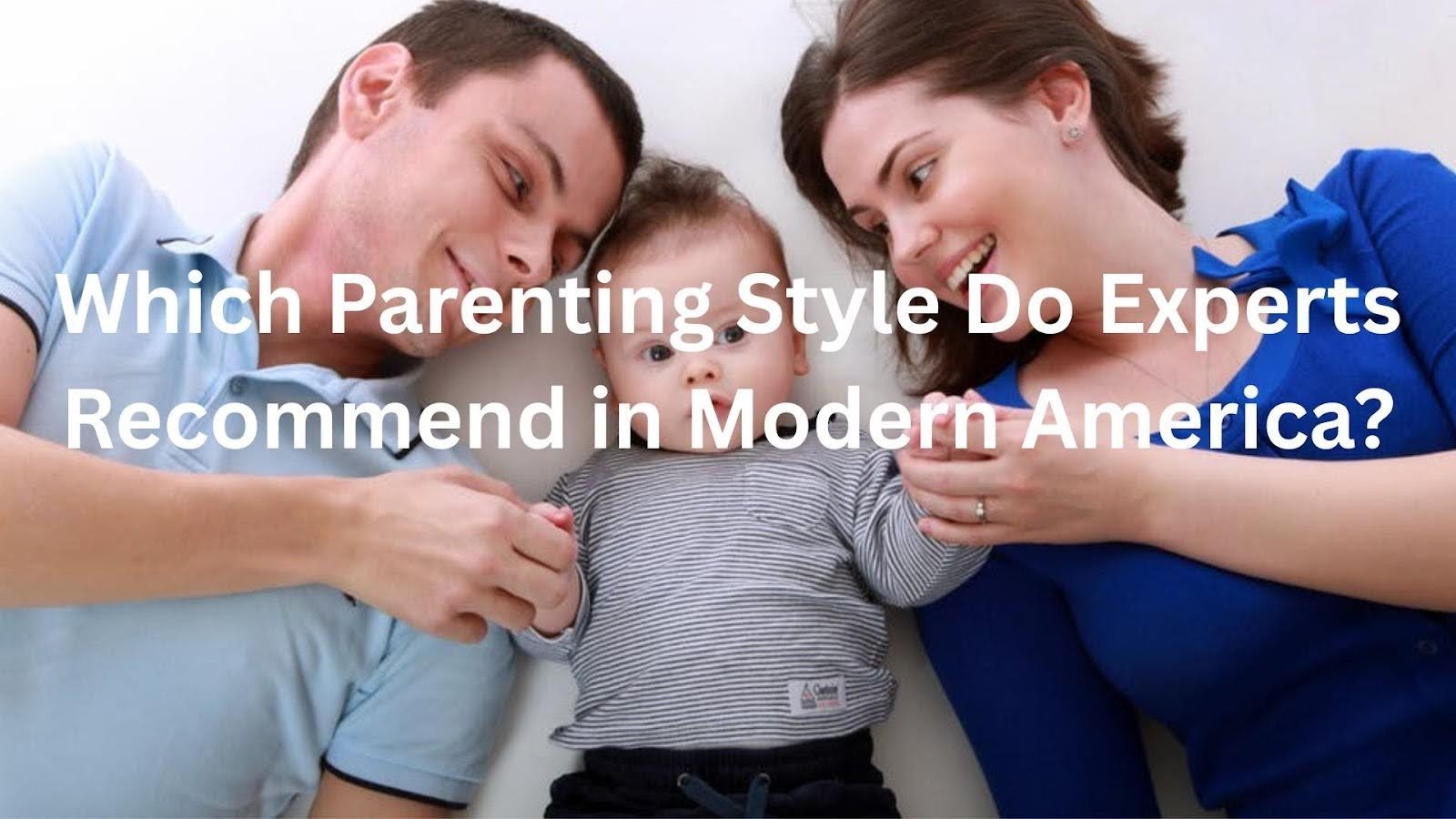You’re at Target watching a child melt down over cereal. One parent acknowledges the child’s feelings while maintaining firm boundaries. Another gives in to stop the tears. Both believe they’re practicing “gentle parenting,” but only one truly understands it.
This confusion happens constantly. Many parents mistake permissiveness for gentleness, thinking that avoiding all conflict means being kind. But real gentle parenting combines empathy with consistent limits.
The parent who validates emotions while holding boundaries teaches their child that feelings are acceptable, but behavior has limits. The parent who gives in teaches that big emotions control outcomes.
Understanding this difference changes everything. When you set loving boundaries, you’re not being mean – you’re building your child’s emotional security. Children need to know what to expect. Boundaries create safety, not stress.
What is Gentle Parenting?

Gentle parenting combines empathy with clear boundaries to build positive relationships through connection and guidance.
This research-based approach teaches emotional regulation and accountability without fear or punishment.
It’s not about letting kids do whatever they want but about teaching through understanding, respect, and consistent rules delivered with kindness and explanation.
What is Permissive Parenting?

Permissive parenting shows high warmth but low boundaries. This approach lacks structure with minimal rules and lenient enforcement.
Parents avoid conflict by giving children significant freedom with few limits. While well-intentioned, it lacks the guidance children need for healthy development, creating insecurity rather than independence and teaching that emotions justify all behaviors.
How to Find Your Parenting Style?

Look at how you handle conflicts with your child. Do you set clear rules and stick to them, or do you give in when your child gets upset?
Gentle parents stay firm with boundaries while showing understanding. Permissive parents avoid conflict by letting children make the choices.
Gentle Parenting vs Permissive Parenting Comparison
| Aspect | Gentle Parenting | Permissive Parenting |
| Core Philosophy | Research-based approach combining empathy with clear boundaries | High warmth but low boundaries with minimal structure |
| Discipline Approach | Discipline as a teaching tool with empathy and respect | Discipline was avoided entirely to prevent upset |
| Boundary Setting | Clear, consistent boundaries with explanations and follow-through | Minimal or absent boundaries leading to child-led decision making |
| Rule Enforcement | Consistent enforcement regardless of the child’s reaction | Inconsistent enforcement gives up when children argue or cry |
| Communication Style | Clear, direct communication with simple explanations | Avoids difficult conversations to maintain peace |
| Response to Emotions | Welcomes all emotions while maintaining limits on behavior | Allows emotions to dictate behavior without consequences |
| Authority Role | Maintains calm, confident authority while showing respect | Tries to be a friend rather than an authority figure |
| Consequence Philosophy | Natural and logical consequences that teach responsibility | Avoids consequences to prevent child unhappiness |
| Problem-Solving Approach | Encourages child problem-solving and critical thinking | Provides quick solutions or cleans up problems for the child |
| Toy Cleanup Example | “I understand you don’t want to clean up, but we always put toys away before bedtime. Will you start with blocks or a dollhouse?” | “You don’t feel like cleaning? That’s okay. I don’t want you upset, so I’ll do it for you.” |
| Sibling Conflict Example | “I love you, and I won’t let you hit your brother. Let’s talk about what happened.” | “I love you, so I’ll ignore it when you hit your brother.” |
| Emotional Development | Promotes emotional intelligence and regulation skills | Children are less likely to develop emotional maturity and self-regulation |
| Social Skills Development | Children develop respect for others and understand social norms | Issues with authority and respect difficulty forming healthy relationships |
| Cognitive Outcomes | Encourages exploration and critical thinking in safe environments | May lead to impulsive, demanding, selfish behavior and poor self-regulation |
| Academic Performance | Better focus and achievement through structured support | Lower academic performance and higher school misconduct rates |
| Self-Esteem Impact | Builds confident, internally motivated children | Lower self-esteem children seek external validation |
| Classroom Behavior | Express emotions effectively, understand rules, and take responsibility for mistakes | Struggle with structure, resist boundaries, seek external validation |
| Long-term Relationships | Secure, trusting relationships with healthy boundaries | Difficulty with authority and structured relationships |
| Mental Health Outcomes | Lower anxiety feels secure with clear expectations | Higher anxiety feels insecure without structure |
| Independence Development | True independence with self-reliance skills | False independence without necessary life skills |
| Research Evidence | Associated with social skills gains and decreased problem behaviors | Higher rates of externalizing behaviors like aggression and substance use |
Tips for Both Parenting Styles
For Gentle Parenting:
- Set clear boundaries before conflicts arise: Establish rules when everyone is calm, not during meltdowns
- Follow through consistently: Say what you mean and do what you say, every single time
- Validate feelings while limiting behavior: “You’re angry, but hitting isn’t allowed. Let’s find another way.”
- Use natural consequences: Let children learn from their choices rather than rescuing them from outcomes
- Stay calm during tantrums: Your emotional regulation teaches them how to manage their own feelings
For Permissive Parenting:
- Start enforcing one simple rule consistently: Pick bedtime or cleanup and stick to it without giving in
- Practice saying no without lengthy explanations: Children need clear limits, not negotiations every time
- Stop cleaning up their messes immediately: Let children face the natural consequences of their choices
- Set a timer for yourself during conflicts: Wait 30 seconds before giving in to crying or begging
- Remember you’re the parent, not the friend: Children need your leadership and guidance, not another peer
Conclusion
Gentle parenting and permissive parenting differ in one crucial aspect: boundaries. Gentle parenting blends empathy with firm limits, while permissive parenting provides warmth without structure. Research confirms children need both emotional support and consistent boundaries to flourish.
You can be compassionate and firm at the same time. Begin by establishing one clear boundary and enforcing it consistently. Your child will feel more secure through predictable guidance.
The key is consistency. When you say no to something unsafe or inappropriate, follow through every time. Acknowledge your child’s disappointment while maintaining the limit. This teaches them that their feelings matter, but rules exist for good reasons.
Children actually crave structure. It helps them understand expectations and feel safe in their environment. Boundaries aren’t punishment – they’re protection.
What’s your biggest boundary challenge? Share your experience below.
Frequently Asked Questions
What is the main difference between gentle parenting and permissive parenting?
Gentle parenting combines empathy with clear, consistent boundaries, while permissive parenting offers high warmth but lacks structure. Gentle parents set firm limits with kindness permissive parents avoid boundaries to prevent conflict, often giving in to children’s demands.
Is gentle parenting just being too soft on children?
No. Gentle parenting maintains firm boundaries while showing respect and empathy. It uses natural consequences and consistent rules to teach responsibility. The approach is actually more structured than permissive parenting, which truly lacks firmness and follow-through.
Which parenting style produces better-behaved children?
Research shows that gentle parenting leads to better outcomes. Children develop stronger emotional regulation, respect for authority, and social skills. Permissive parenting often results in children who struggle with structure, have higher anxiety, and show more behavioral problems.
Can I switch from permissive to gentle parenting?
Yes. Start by choosing one boundary to enforce consistently. Explain changes to your children and follow through regardless of their reaction. Be patient with yourself as you develop new habits. Children typically adjust well to increased structure.
How do I know if I’m being permissive instead of gentle?
Permissive parents give in when children cry, argue, or resist. They avoid consequences to prevent upset. Gentle parents validate feelings but maintain boundaries, use logical consequences, and stay consistent even when children are unhappy with the limits.

